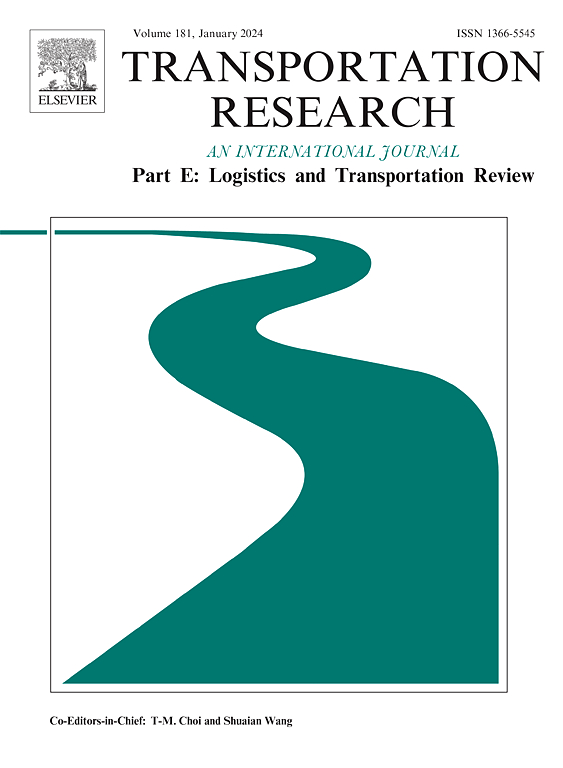CL-DGCN: contrastive learning based deeper graph convolutional network for traffic flow data prediction
IF 8.8
1区 工程技术
Q1 ECONOMICS
Transportation Research Part E-Logistics and Transportation Review
Pub Date : 2025-08-05
DOI:10.1016/j.tre.2025.104345
引用次数: 0
Abstract
Accurate and efficient traffic prediction helps to establish multimodal transportation systems and improve the travelling experience in daily life. Currently the mainstream traffic prediction methods are implemented based on Graph Convolutional Network (GCN), superimposing GCN layers can obtain better prediction results, but excessive superimposition will lead to the over-smooth problem, this paper proposes CL-DGCN to overcome this problem, which obtains the representations of the features through contrastive learning, and uses the improved message aggregation function to overcome the over-smooth problem. In this study, the CL-DGCN model is experimented on four domestic and international open-source, real datasets (PEMSBAY, METR-LA, BEIJING and SZ-TAXI), and CL-DGCN achieves optimal or sub-optimal results in most time-step predictions, and reduces the composite error by more than 10 % compared to the baseline model, which well illustrates that the CL-DGCN model possesses more accurate prediction results.
CL-DGCN:基于对比学习的交通流数据预测深度图卷积网络
准确、高效的交通预测有助于建立多式联运系统,改善日常生活中的出行体验。目前主流的流量预测方法都是基于图卷积网络(GCN)实现的,叠加GCN层可以获得更好的预测结果,但过度叠加会导致过平滑问题,本文提出CL-DGCN来克服这一问题,通过对比学习获得特征的表示,并使用改进的消息聚合函数来克服过平滑问题。本文对CL-DGCN模型在PEMSBAY、met - la、BEIJING和SZ-TAXI四个国内外开源真实数据集上进行了实验,结果表明,CL-DGCN模型在大多数时间步长预测中都达到了最优或次优结果,与基线模型相比,其复合误差降低了10%以上,说明CL-DGCN模型具有更准确的预测结果。
本文章由计算机程序翻译,如有差异,请以英文原文为准。
求助全文
约1分钟内获得全文
求助全文
来源期刊
CiteScore
16.20
自引率
16.00%
发文量
285
审稿时长
62 days
期刊介绍:
Transportation Research Part E: Logistics and Transportation Review is a reputable journal that publishes high-quality articles covering a wide range of topics in the field of logistics and transportation research. The journal welcomes submissions on various subjects, including transport economics, transport infrastructure and investment appraisal, evaluation of public policies related to transportation, empirical and analytical studies of logistics management practices and performance, logistics and operations models, and logistics and supply chain management.
Part E aims to provide informative and well-researched articles that contribute to the understanding and advancement of the field. The content of the journal is complementary to other prestigious journals in transportation research, such as Transportation Research Part A: Policy and Practice, Part B: Methodological, Part C: Emerging Technologies, Part D: Transport and Environment, and Part F: Traffic Psychology and Behaviour. Together, these journals form a comprehensive and cohesive reference for current research in transportation science.

 求助内容:
求助内容: 应助结果提醒方式:
应助结果提醒方式:


